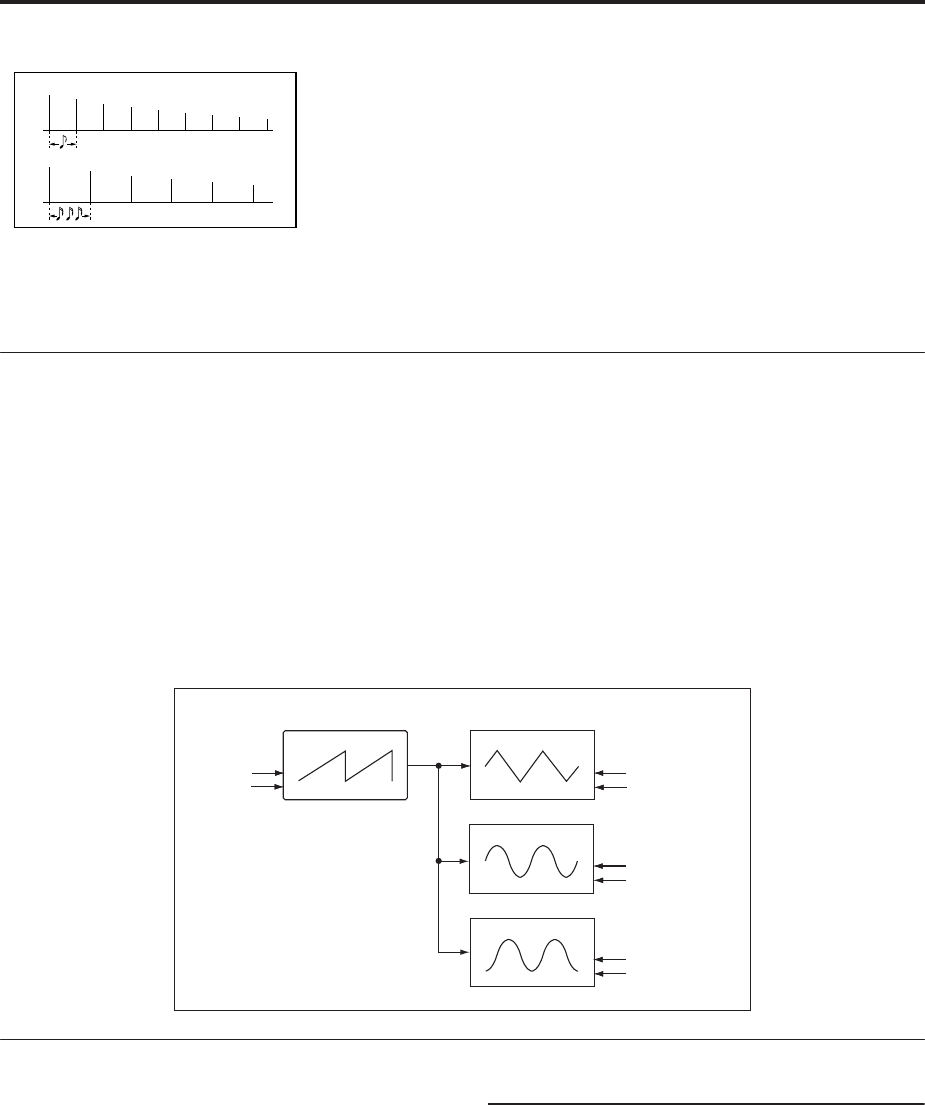
Effect Guide
730
3. Set the BPM as desired.
To synchronize to the system clock, set BPM to MIDI.
To set the delays to a specific tempo, separate from the
system clock, set BPM to the desired tempo (between
40 and 240 BPM).
If the combination of the tempo, Base Note, and Times
(x) settings in conjunction would exceed the maximum
delay time, a warning such as “Time Over? >OVER!”
will appear in the display. If this happens, just reduce
the delay time. Note that the maximum delay time
depends on which delay effect you’re using. For
instance, the maximum delay time for 093: Stereo BPM
Delay is 1,360msec, while the maximum delay time for
094: Stereo BPM Long Delay is 2,730msec.
Common FX LFOs
Normally, LFO-based effects–such as choruses,
flangers, phasers, filters, and auto-pan–each have their
own independent LFO. The OASYS effects support this
standard mechanism, but add a new one: Common FX
LFOs.
The two Common FX LFOs allow you to synchronize
multiple LFO-based effects together. They’re available
in most LFO-based effects, in addition to the
individual LFOs, providing:
• Master sources of frequency and phase for all LFO-
based effects
• LFO speed set by either frequency or tempo
• Reset from Dmod sources, for either realtime
performance or synchronizing to a down-beat in a
sequence
When using the Common FX LFOs, you can still
control the LFO phase individually for each effect, and
often change the waveform individually as well.
You can edit the Common FX LFO parameters on the
P8– Common FX LFO pages of Program, Combination,
Sequencer, and Sampling modes.
FX Control Buses
The FX Control Buses lets you create effects
“sidechains.” Sidechains let you control an effect with
one audio signal (the sidechain), while the effect
processes a completely different audio signal. This is
convenient for use with vocoders, compressors and
limiters, gates, etc.
OASYS includes two true- stereo FX Control Buses,
which can be used with the following effects:
Vocoder
026: Vocoder
Compressor, limiter, and gate effects
002: Stereo Compressor
003: Stereo Expander
005: Stereo Limiter
009: Stereo Gate
010: Stereo Noise Reduction
Example: Gated Reverb (Program mode)
If you process reverberant sound through a gate effect,
the gating may not occur as desired since the reverb
extends the duration of the sound. Normally, you will
use the un-reverberated sound to control the gate, as
shown in the diagram. Use Bus Select to send OSC1
and 2 (or EXi1 and 2) to IFX1 and also via FX Control
Bus to FX Control 1. Set the IFX2: Stereo Gate
“Envelope Source” to FX Control 1. This lets you
control the gate using a different signal than the input
(in this example, the reverberated sound).
BPM/MIDI Sync: Delay Time
Lch
Rch
Dry Wet
Dry Wet
Stereo Flanger
Common FX LFO1
Common FX LFO
Stereo Phaser
Stereo Auto Pan
Waveforem = Triangle
Generate original LFO waveform
Frequency[Hz]
Reset
Phase Offset = 0 [deg]
Waveforem = Sine
Phase Offset = 0 [deg]
Waveforem = Sine
Phase Offset = +90 [deg]
LFO Type = Common1


















